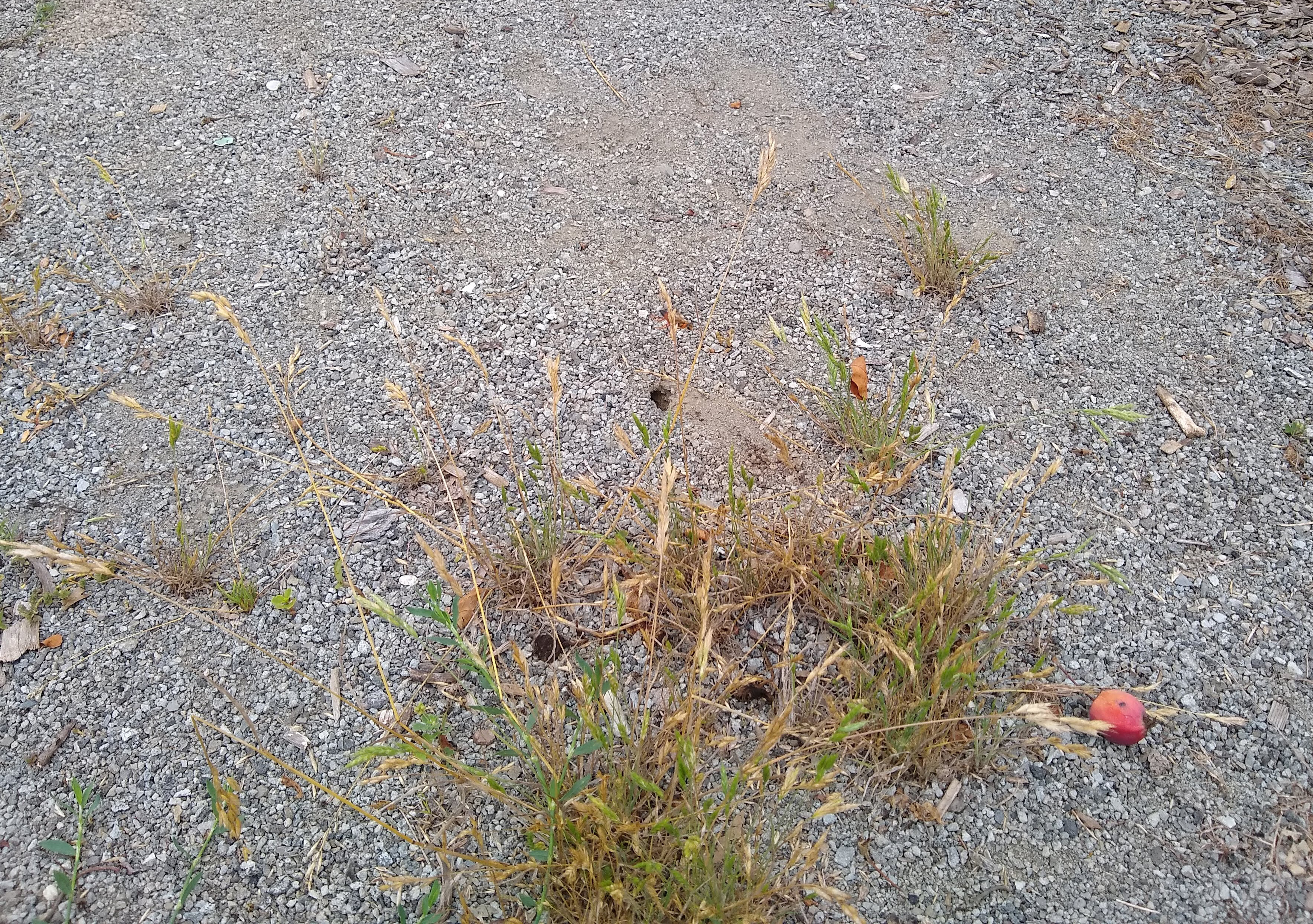Michigan insects in the garden – Week 6: Great golden digger wasp
The great golden digger wasp is a large wasp that you don’t need to fear.

The great golden digger wasp’s (Sphex ichneumoneus) large size and nest guarding can elicit awe and fear. However, size alone is a misguided measure for risk of injury. This and other large wasps in Michigan, including the cicada killer, live solitary lifestyles with a single goal: find food for their children.
Wasp behavior
In addition to its length of nearly 1 inch, the great golden digger wasp is recognizable by its wing flicking behavior and guarding and digging nest entrances (see video below). Upon emerging from her nest, the wasp will visit perennial flowers to sip nectar and wait there or on leaves to hunt katydids and crickets.
The wasp has a specific pattern programmed for gathering insects into the nest. After finding the right insect, she stings it with a long ovipositor and injects a venom that paralyzes the insect to make it easier to drag the insect away. The wasp carries the paralyzed food item by its antennae and places it near the tunnel entrance to confirm the item is acceptable for her offspring. After the wasp inspects it, she grabs the katydid or cricket by the base of the antennae and enters the nest. Crickets or katydids are dragged and stored in individual chambers in the tunnel (Photo 1), where they await their purpose as food for the wasp’s offspring.
A single wasp can place one to six katydids or crickets in each nest, and the wasp will lay a single egg on top of each paralyzed food item. After the egg hatches, the developing larva, which is wormlike, does not need to travel far in search of a meal. The larva continues its development below ground and spends winter inside the nest as an immature life stage as a pupa.
Finding nests
Nests are constructed in exposed areas with loose soil or gravel, and they are about 1 – 2 centimeters in diameter. Several nests can be built in close proximity to each other (Photo 2). If you encounter an unknown nest opening, it is best to avoid walking barefoot or disturbing the area. Several bees and wasps nest in the soil, and Michigan State University Extension has a resource on identifying nest occupants. If you approach these large wasps, they will likely fly away but may buzz towards you. The chances of getting stung are low, unless you intentionally aggravate a wasp guarding her nest.

Adult great golden digger wasps live for five to eight weeks in July and August, which provides a long period for observing them. A large flying wasp may appear intimidating. However, the great golden digger wasp has a different lifestyle than bald faced hornets or yellowjacket wasps, who are social and aggressive. Observe the great golden digger wasp from a safe distance and admire her task-oriented focus at hunting prey and providing resources for her offspring.



 Print
Print Email
Email





